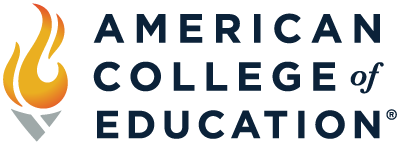
When it comes to classroom libraries, there tends to be two primary methods for organization. Some teachers organize by genre, such as nonfiction, historical fiction or fantasy. Others opt for categorizing by reading level or difficulty, and students pick from the level they are assigned – also known as leveling.
Leveling is separate from the concepts of “grade-level text” and Lexiles. There is value in making sure students are reading texts that are developmentally appropriate and still challenging. However, grade-level text organizations have been created more systematically with consideration for phonics skills and vocabulary, and Lexiles focus on the levels of books themselves, rather than assigning levels to students.
While there are advantages and disadvantages with different approaches, the inherent issues with leveling make it a practice that should be reconsidered for a few reasons.
- The process of leveling texts is variable and inconsistent. Factors such as sentence length, multisyllabic words and word count may be taken into consideration when leveling a text, but the inconsistency with this process makes it inequitable. There are a plethora of leveling systems in existence today and, while they may be similar, no two are exactly alike. These may be useful frames of reference for teachers to explain progress at parent-teacher conferences, but not much more.
- When it comes to student progress regarding levels, a variety of practices may be used to determine a student is ready to move on. In some cases, students advance through the levels rapidly. But in other cases, students’ progress decreases or stays the same. This “progress” often doesn’t account for text content, which can play a huge role in whether a student can read and comprehend a text proficiently. The variability of how we measure progress contributes to the unreliability of leveling as a precise and accurate measurement.
- Leveling is limiting. It creates a culture that causes young readers to categorize themselves and their successes by reading level. When students fail to make progress, they may feel they are incapable of learning and getting better. Students might veer away from books of interest or books that would challenge them when they are forced to remain in “their level.”
- Leveling detracts from the things teachers would like students to associate with reading, such as comprehension, the value of learning and self-selecting texts that are of personal interest. When books are organized by genre, students can explore different texts and encounter a variety of structures and formats, as well as more advanced vocabulary and language. Students should have the opportunity to practice with decodable texts or those that align with specifically taught skills.
If we don’t consider how to organize our classroom libraries intentionally, there can be consequences for the student. When the connection between reading books and learning classroom-related concepts is not made by the student, reading becomes an exhausting process that decreases reading appreciation, and these students might attempt to avoid reading. This hinders vocabulary expansion, exposure to new content and opportunities to practice more challenging words and texts. It becomes a vicious cycle of a student hating reading, avoiding reading, making no progress on reading skills and feeling unsuccessful.
Teachers, this is not a plea to throw out all your leveled texts. A lot of effort goes into organizing classroom libraries by level, and that commitment should not be overlooked. But consider if levels are being used for their evidence-based effectiveness or simply because that’s how it’s always been done. Here’s how can we do better:
- Organize your materials in a way that will genuinely promote an appreciation for reading and learning.
- Ensure that your students have access to reading materials that will challenge them appropriately and be of interest.
- If a student is interested in reading a particular book that may be too challenging for them, find a way to make it accessible to that student. Options may include reading with an adult or more proficient reader or listening to an audio version.
In the end, each educator’s classroom is their own to manage and lead, but I encourage you to research your library organization before implementing it. Systems that emphasize reading levels as learning opportunities, rather than a student ranking, may be more useful for encouraging students to challenge themselves, use what they’re learning in the classroom and cultivate a love of reading.
Expand your knowledge of reading instruction. Explore American College of Education’s fully online M.Ed. in Literacy degree.

